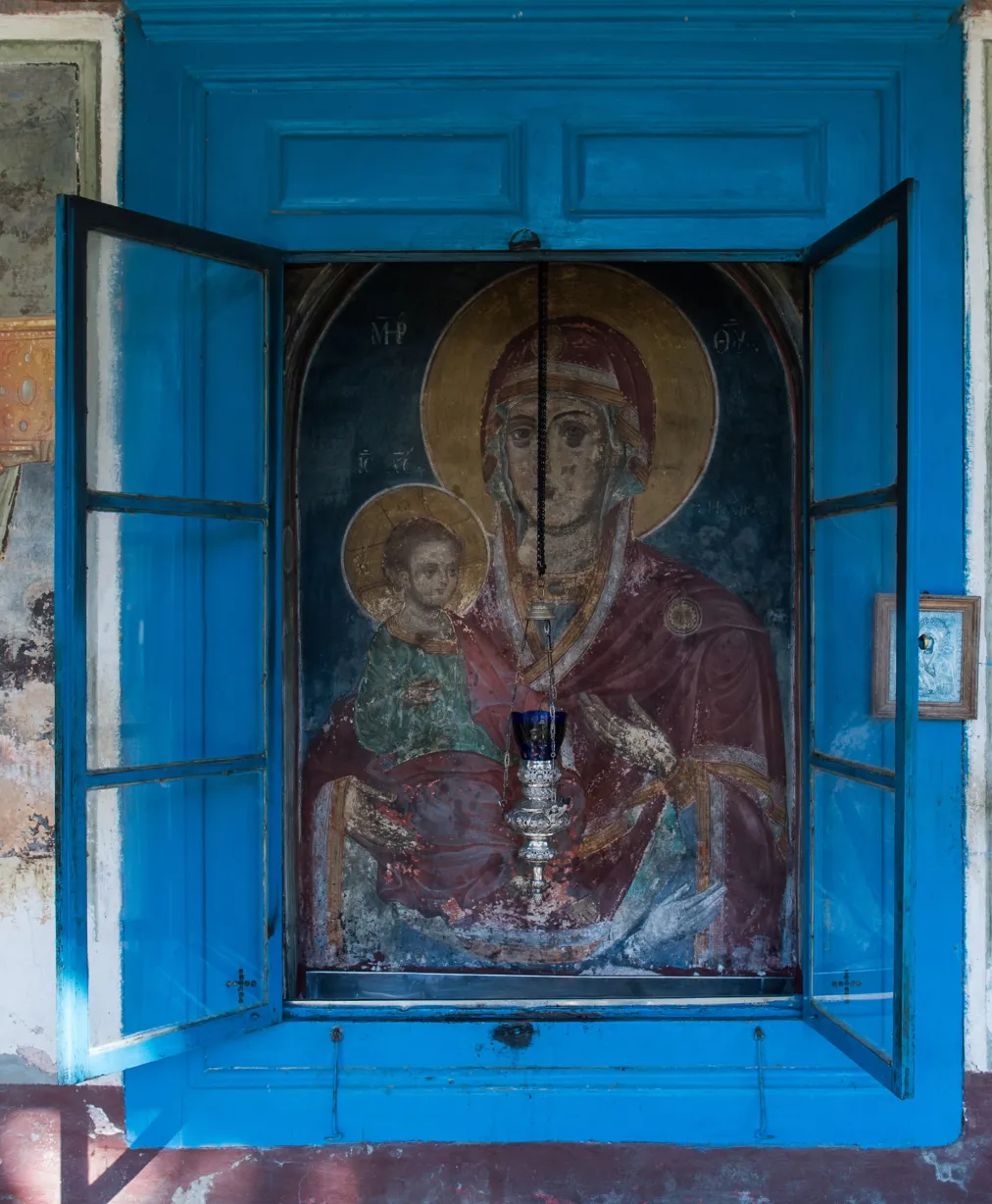The miraculous story of Trojeručica
The icon of the Holy Mother of God Trojeručica (Greek: Παναγία Τριχερουσα) is the most revered icon in Hilandar, whose monks consider her the Abbess and protector of their family. At the same time, she is one of the most famous icons in the Orthodox world. It was made as a lithic icon, i.e. it is painted on both sides. In the background, there is an icon of St. Nicholas, which is hidden from view today. It was a family treasure of Saint John Damascene who kept it in his chapel in Damascus.
At that time, at the beginning of the 8th century, the heresy of iconoclasm (which challenged the veneration of icons) appeared, centered in Constantinople. John of Damascus, then still a layman, persecuted the iconoclast heresy, both in various letters and verbally.
The iconoclast, the Byzantine emperor Leo the Isaurian, invented a villainy against the worshiper of holy icons, John of Damascus. He planted a false letter to him which indicated that the Damascene was plotting against Walid, Caliph of Damascus. Under the impression of the epistle, the caliph ordered to cut off John’s right hand with which he allegedly wrote the epistle, and hang it in the main square of Damascus.
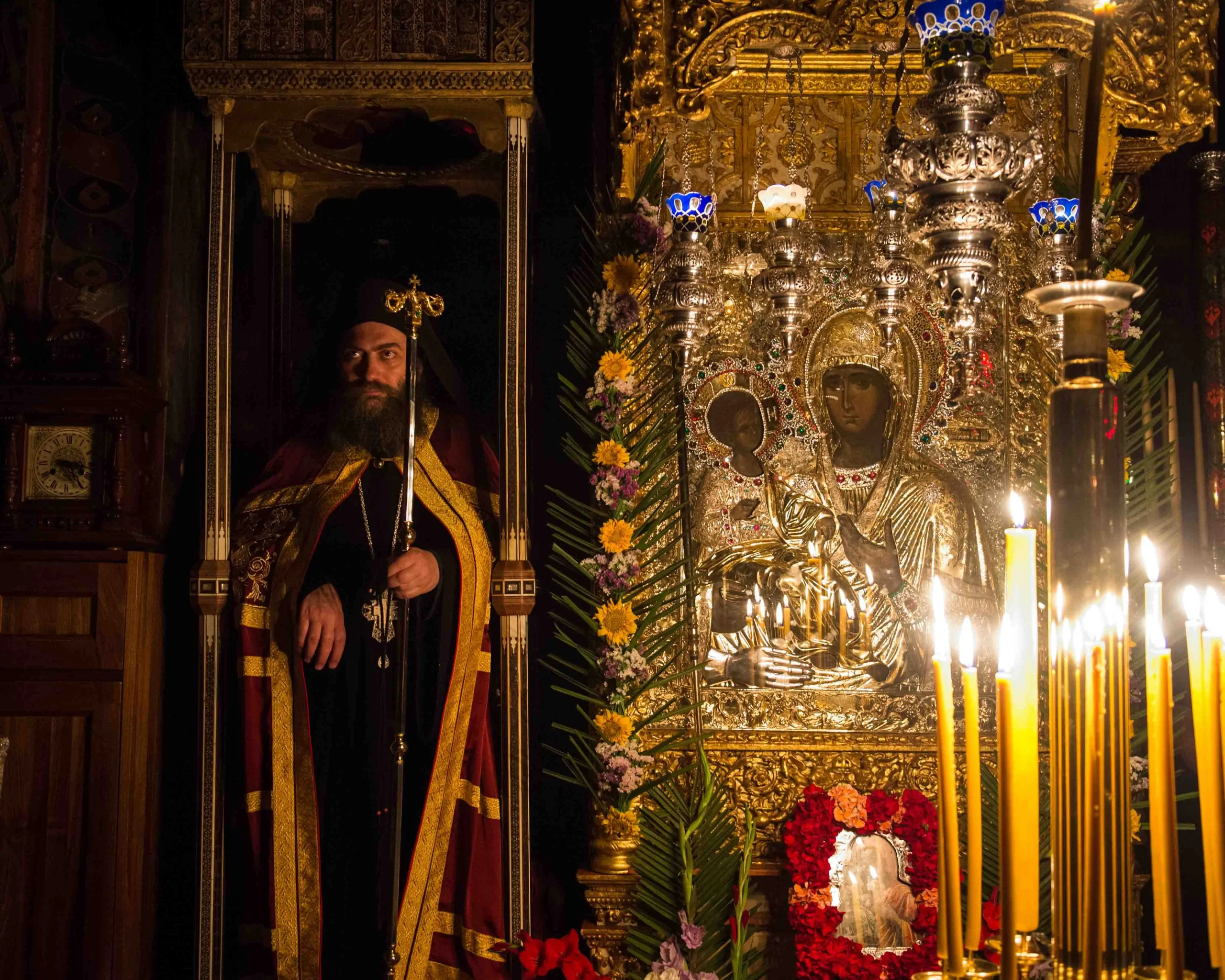
Miracle of the Holy Mother of God
After carrying out the caliph’s command, Saint John asked to be given his severed hand. Holding his severed right hand with his left hand and joining it to his body, he prayed on his knees all night before the icon of the Blessed Virgin Mary. He prayed to heal him so that he could continue to write in memory of the miracle that happened.
During the prayer, tired of the pain and suffering, he fell asleep for a short time. In his dream, he saw the Virgin Mary alive on the icon and heard her telling him that his hand was healed and that he should not be sad. He just needs to fulfill what he promised. To continue writing for the protection of holy icons. When he woke up, he saw that his hand was healthy. In the place where it was cut, a red thread remained, as a reminder of the suffering and the miracle.
St. John of Damascus, out of joy and gratitude to the Blessed Virgin Mary, took care to attach a silver hand, similar to the severed one, to the lower left side of the icon. Since then, the icon has been named Trojeručica.
After this miraculous healing, Saint John decides to leave the world and become a monk. He leaves Syria and goes to do asceticism in the famous Lavra of Saint Sava the Consecrated in Palestine, where he became a monk. The Most Holy Trojeručica was always by his side.
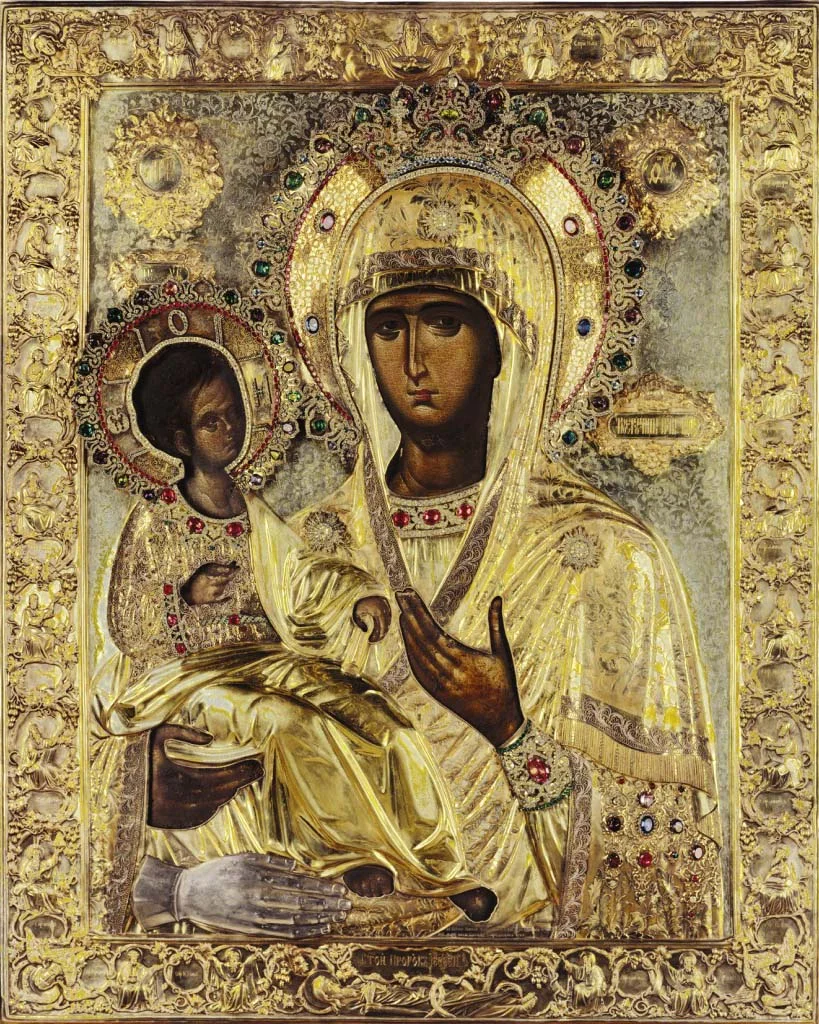
Saint Sava receives Trojeručica as a gift
While living in the Lavra, he learned about the prophecies of Saint Sava the Sanctified, who, before his death, ordered that his scepter be attached to his grave, i.e. abbot’s staff. He prophesied that in the future a royal son of his name would come to the monastery as a devotee, i.e. Sava, and that when he bows to the grave, the attached stick will fall to the ground. He ordered that the abbot’s staff as well as the icon of the Blessed Virgin Mary, the “Milkgiver” be given to him as a blessing. St. John Damascene left a bequest that the emperor’s son would take his Holy Mother of God “Trojeručica” as a blessing.
After five centuries, in 1217, the emperor’s son, the monk Sava from the Hilandar monastery, came to the Lavra as a devotee. After they were convinced of the fulfillment of the prophecy, the brotherhood gave Sava the abbot’s staff, the icons of the Milkgiver and Trojeručica.
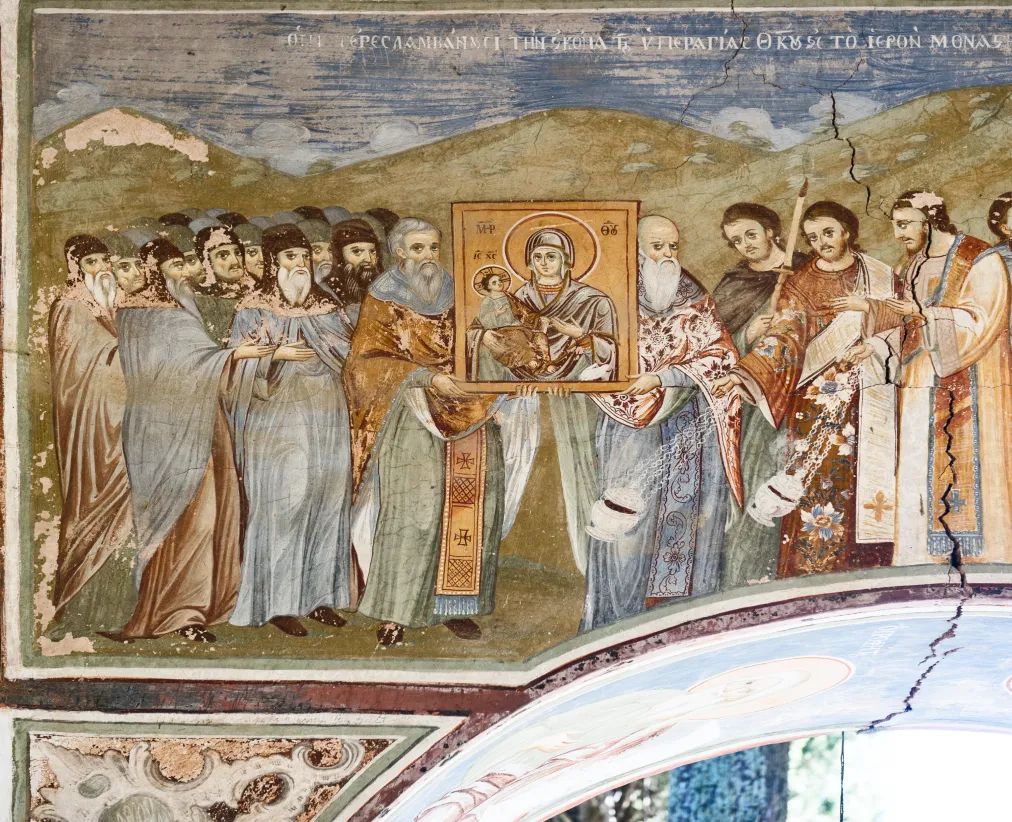
The first and second arrival of Trojeručica in Hilandar
Saint Sava brought the Trojeručica Icon with him to Hilandar. It remained there until 1347. Then the Serbian Emperor Dušan visited Mount Athos, and on his return to Serbia, he took the Trojeručica icon with him as a blessing.
By the end of the 14th century, for an unknown reason and in an unknown way, the icon passed from the court of Emperor Dušan to the property of the Studenica monastery. This monastery, as well as other areas of Serbia, became the target of attacks by Turkish invaders at the beginning of the 15th century. When the monks heard that the Turks were headed for the monastery, they quickly took care to save the most valuable valuables they had. They put the icon of the Trojeručica and fixed it on the saddle of a donkey, and let him go where the will of the Mother of God led him. And indeed, guided by the Holy Mother of God, the donkey traveled a long way and came to Mount Athos. At the command of the Mother of God, it stopped not far from Hilandar. When they realized what was happening, the monks hurried and removed the icon from the donkey’s back, which immediately fell down dead. At the place where the donkey stopped with the icon, a place of worship, a proskinitar, was built in memory of that event. Every year, in commemoration of the icon’s arrival in Hilandar, a litany with the Trojeručica icon is performed from the monastery to that place. At the beginning of the 15th century, the monks placed her on the top place on the altar of the Hilandar Monastery’s Cathedral Church as a great honor.
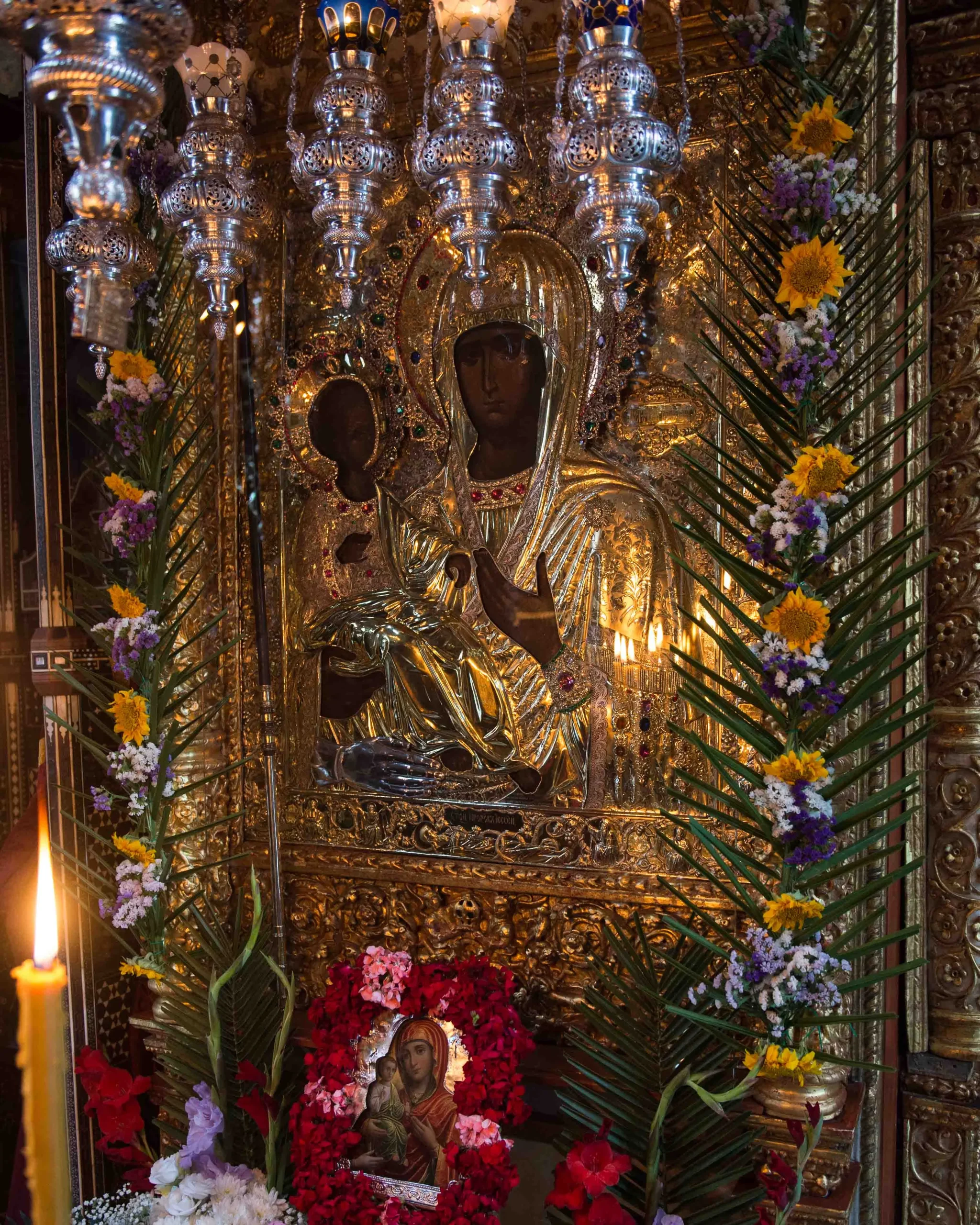
Trojeručica as Abbess of Hilandar
The tradition of the Hilandar monastery records some other miraculous events related to this icon. At the end of the 15th century, the monastery found itself in a difficult situation regarding the election of an abbot. The many monks of that time belonged to different nationalities. There were Serbs, Greeks, Bulgarians, and Russians, and they all proposed their representative as an abbot. Since they could not agree among themselves, the Most Holy Mother of God herself solved the problem. During one evening service, the voice of the Mother of God was clearly heard from the icon that she was the abbess of the monastery. The monks heard the voice but did not attach any special importance to it.
When they came to the church for matins on the second day, they saw an icon in the abbot’s place. They thought that the churchman had taken the icon outside by mistake and put it back on the altar. However, the next day they found her on the abbess’s throne. They thought that the ecclesiarch had done it, so they locked the door of the church themselves after vespers and made sure that no one remained hidden in the church. In the morning, the brothers unlocked the door to celebrate matins and the icon of the Virgin was back in the abbot’s place! Then they were finally convinced that it was her will.
At that time, a virtuous solitary came to the monastery. He told them that the Holy Mother of God had appeared to him and told them to tell them that from now on she herself would become the abbess of the monastery and that the brothers should reconcile. He told them not to elect more abbots and not to move the icon from the abbot’s place. The monks obeyed the will of the Most Holy Mother of God. Since then, no one has moved her from her place. From then until today, each elected abbot takes a second place, on the side, next to the icon. The priests and, in general, all the monks of the monastery make offerings in front of her as the abbess of the monastery before they begin their service and obedience.
Thus, the icon of the Most Holy Trojeručica became the patron icon of Hilandar Monastery. All the monks who are under her abbotship accept her as their mother, protector, and comforter in various difficult situations that the monastic life brings.
Many miracles happened in front of the icon of the Most Holy Mother of God in Hilandar. For the sake of protection and beauty, a golden chain is placed on the icon, which has five thousand precious gemstones imprinted on it, as well as other valuable objects that are presented by pious devotees.
Every year on July 25 (12th according to the old calendar) her holiday is solemnized. The all-night liturgical service celebrates the honor and miracles of the Most Holy Trojeručica.
